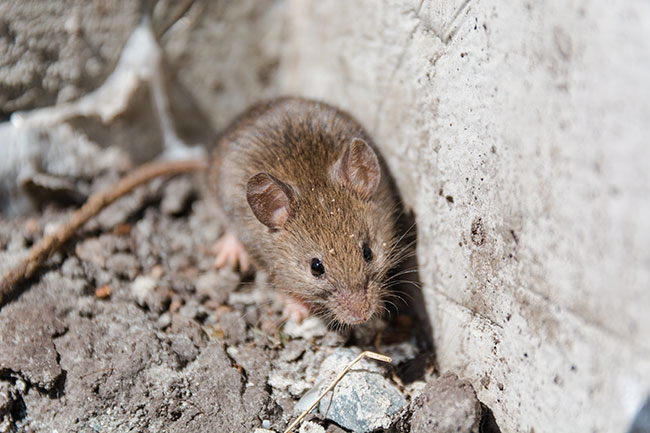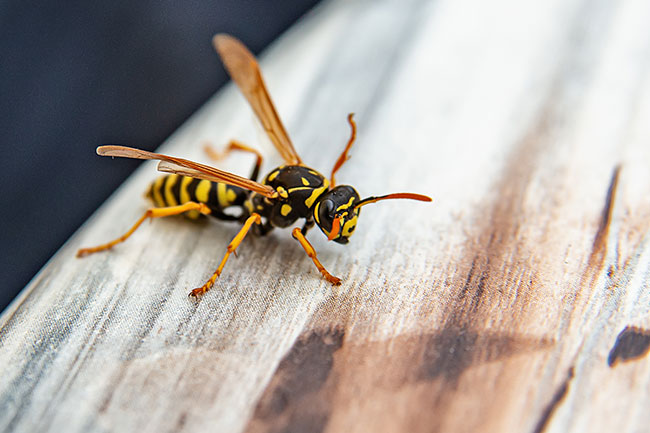
Features
Crop Protection
Keeping Your Greenhouse Squatter-Free This Winter
Is your greenhouse at risk for overwintering pests?
February 22, 2022 By Alice Sinia, PhD
 While rodents are year-round pests, they like to sneak indoors during the colder months. Look out for droppings and gnaw marks inside the greenhouse.
Photo: Sergey_Siberia88/Adobe stock
While rodents are year-round pests, they like to sneak indoors during the colder months. Look out for droppings and gnaw marks inside the greenhouse.
Photo: Sergey_Siberia88/Adobe stock With wintertime in full swing, it’s critical to be mindful of overwintering pests and how they affect your greenhouse.
Unfortunately, greenhouses offer all the things that pests need to survive during the winter – warmth, shelter, food and water. To build the best mitigation plan for winter pests, it is important to know what overwintering is and for which pests your greenhouse is at risk.
Overwintering is a commonly used term to describe the survival habits of pests during the colder months. As it relates to pests (and plants) specifically, overwintering includes the activities that these living things do to make it through the winter.
For pests, this typically means finding shelter to wait out the harsh temperatures and snowy climates. Bugs and rodents will enter structures and/or utilize foliage for shelter and protection from the elements during the winter months.
Signs you may have pests seeking refuge in your greenhouse include:
- Rodent droppings, which are small, black and rod shaped in appearance, have sizes that depend on the species – about 4 to 6 millimeters long for mice and 10 to 20 millimeters long for rats
- Gnaw marks or chewed holes through cardboard, paper or wooden structures as well as wiring
- Gnaw marks or holes on stems, roots, leaves, vegetables and fruits on plants
- Nests within your greenhouse, active or discarded nesting materials nearby
- Wet or dirt footprints on the floor
- Presence of active crawling or flying insects on warm sunny winter days, especially on south walls of the greenhouse
- Large number of insects congregating on walls and entry ways, attempting to go inside, particularly in the fall
Even if you don’t find active evidence of pest activity, it’s important to know which pests are hoping to take up residence in your greenhouse and how to proactively (or reactively) keep them out through the remainder of the winter.
Below is a list of the most common winter pests and ways to protect your greenhouse and product throughout the season.
Rodents
While rodents are technically a year-round pest, and therefore do not overwinter, they will still attempt to migrate indoors when temperatures drop outdoors – their desire to seek warmth and safety in shelter is strong, and they’ll want to be closer to readily available food sources. The rodent’s body structure allows them to squeeze through openings much smaller than their body size, so sealing up any cracks, holes or crevices at the base of your greenhouse is critical to keeping them out.
Birds
Non-migratory birds seek warmth and shelter to survive in the winter. You may find bird nests inside of your greenhouse, or these types of birds may nest on the outside or edge of your structure and gain entry into the greenhouse whenever possible or necessary. Ensure that all vents or openings in your greenhouse stay sealed for the winter. If they must be open for airflow, confirm that a properly secured mesh screen is in place over the opening to impede birds from nesting inside.
Other Insects

Other insects such as wasp queens, stinkbugs and more, can migrate into the greenhouse.
Photo: nedomacki/Getty images
Other insects to look out for in the winter months include stinkbugs, particularly the brown mamorated stinkbug, boxelder bugs, cluster flies, ladybugs and wasp queens. All these insects will try to migrate inside your greenhouse as they look for the warmth and shelter used to keep growing plants alive and flourishing. The best defence against insects is indeed a good offence – you want to stop them from ever getting inside your greenhouse. In the early fall, inspect the exterior of the building for exclusion and identify potential entry points – such as gaps, holes and cracks in walls around utility lines or intakes, window frames or vents. Seal and insect-proof accordingly. With the help of a professional pest control provider, perform an exterior perimeter repellent or residual treatment around the building to create a buffer zone that will prevent the insects from going inside. Spot treat potential exterior entry points that cannot be insect proofed. Inspect everything you bring into your greenhouse to ensure insects are not hitchhiking inside.
Next steps
Knowing what pests to look out for in your greenhouse this winter goes a long way to help you avoid unwelcome guests.
If you find evidence of rodents, birds, and bugs, search the perimeter to check for any potential points of entry and seal them off as soon as possible. Contact your pest management provider to ensure they can properly handle the situation in conjunction with your overarching pest management plan.
As always, the best defence against pests is to work proactively with your pest management provider before the winter temperatures set in so you can start the season well prepared. Don’t forget to schedule an appointment with your pest management provider going into the spring so you are well prepared for peak pest season in the warmer months as well.
Alice Sinia, Ph.D. is quality assurance manager of regulatory/lab services for Orkin Canada. For more information, email Alice at asinia@orkincanada.com or visit orkincanada.ca.
Print this page